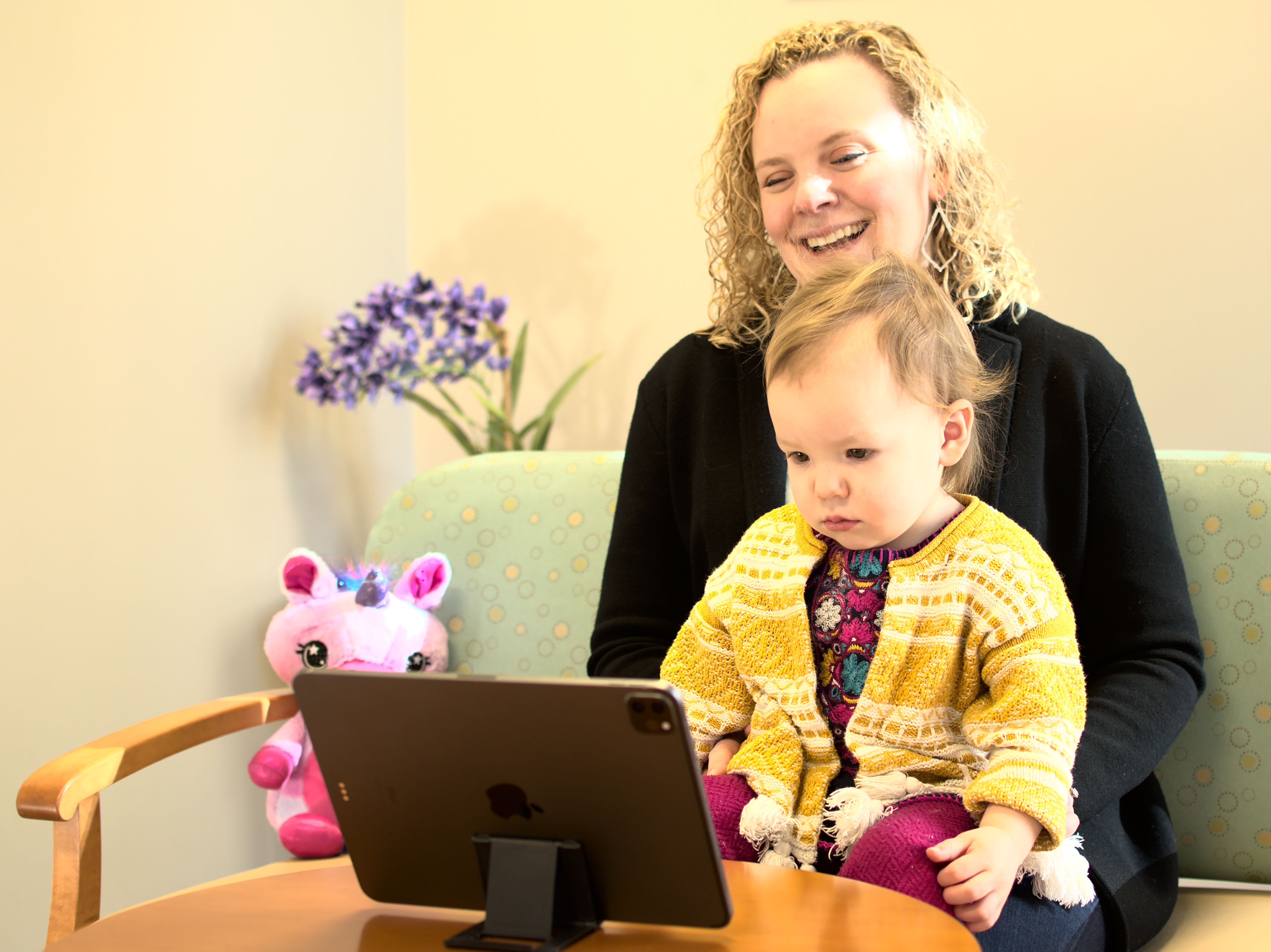
• Research Highlight
A tablet-based screening tool that analyzes children’s behavior in response to specific video clips shows promise for improving early detection of autism, according to a study supported in part by the National Institute of Mental Health. While early detection of autism generally relies on parent questionnaires, data suggest that the accuracy of these assessments may vary across settings and populations. Objective measurement tools, including digital technologies, could help improve detection in real-world settings and reduce disparities in early detection and identification.
What did the researchers do?

In the study, the researchers Geraldine Dawson, Ph.D. , Guillermo Sapiro, Ph.D. and colleagues from the Duke Center for Autism and Brain Development He tried a tablet app called SenseToKnow. The app uses the tablet’s camera to capture a variety of child behaviors, including gaze patterns, facial expressions, head movements, blink rate, and whether the child responded to her name. According to the researchers, this multimodal approach allows them to capture the variety of behavioral variations that children with autism can display.
During routine health care visits, young children watched specially designed video clips while the device recorded their behaviors and quantified them using computer vision, a type of artificial intelligence. The app then used machine learning to analyze the behavioral data, providing a diagnostic classification and a prediction confidence score indicating the reliability of that classification. The app also produced a quality score indicating whether it was administered correctly.
Study participants included 475 young children, ages 17 to 36 months. Of these young children, 49 later received a diagnosis of autism and 98 later received a diagnosis of developmental delay and/or language delay without autism.
What did the researchers find?
Overall, the app showed high accuracy for classifying children with autism compared to neurotypical children, and even higher accuracy when analyzes included only results that had high prediction confidence scores. Classification accuracy remained high when analyzes included data from children with developmental delay and/or language delay.
The app correctly classified nine children with autism who had not been correctly identified with a standard autism early detection tool, the Modified Checklist for Autism in Toddlers (M-CHAT-Revised with Follow-up). Classification accuracy increased further when the researchers combined the app’s analytics with data from the M-CHAT screening tool.
Importantly, classification accuracy was consistent regardless of the child’s sex, race, ethnicity, and age. According to the researchers, these initial findings suggest that objective digital screening tools can help reduce existing disparities in early autism detection, although more work is needed to establish the app’s performance in diverse groups.
What do the results mean?
The advantages of the SenseToKnow app include its usability in real-world environments and the fact that it provides actionable information. For example, a low quality score indicates that the application was not managed correctly and may need to be managed again. On the other hand, a high prediction confidence score gives weight to the classification results and can help identify young children who are likely to benefit from further screening and evaluation.
Dawson and his colleagues are evaluating SenseToKnow in a variety of contexts. In another NIMH-funded study, researchers are examining accuracy when parents administer the app at home on their own devices. They are also exploring whether the app can be used to detect early behavioral signs of autism in babies as young as 6 to 9 months.
The researchers emphasize that they do not intend SenseToKnow to be the only source of data for diagnosis. Rather, they envision autism screening as a multi-part process that includes parent-reported questionnaires, objective digital screening tools, and other data sources such as electronic medical records. They also note that screening is part of a broader clinical pathway that includes provider training, careful implementation, and integrated links to services, supports, and interventions.
“We conclude that quantitative, objective, and scalable digital phenotyping holds promise for increasing the accuracy of autism screening and reducing disparities in access to diagnosis and intervention, complementing existing autism screening questionnaires,” Dawson and colleagues write.
Reference
Perochon, S., Di Martino, J.M., Carpenter, K.L.H. et al. (2023). Early detection of autism using digital behavioral phenotyping. Nature Medicine, 292489–2497. https://doi.org/10.1038/s41591-023-02574-3







